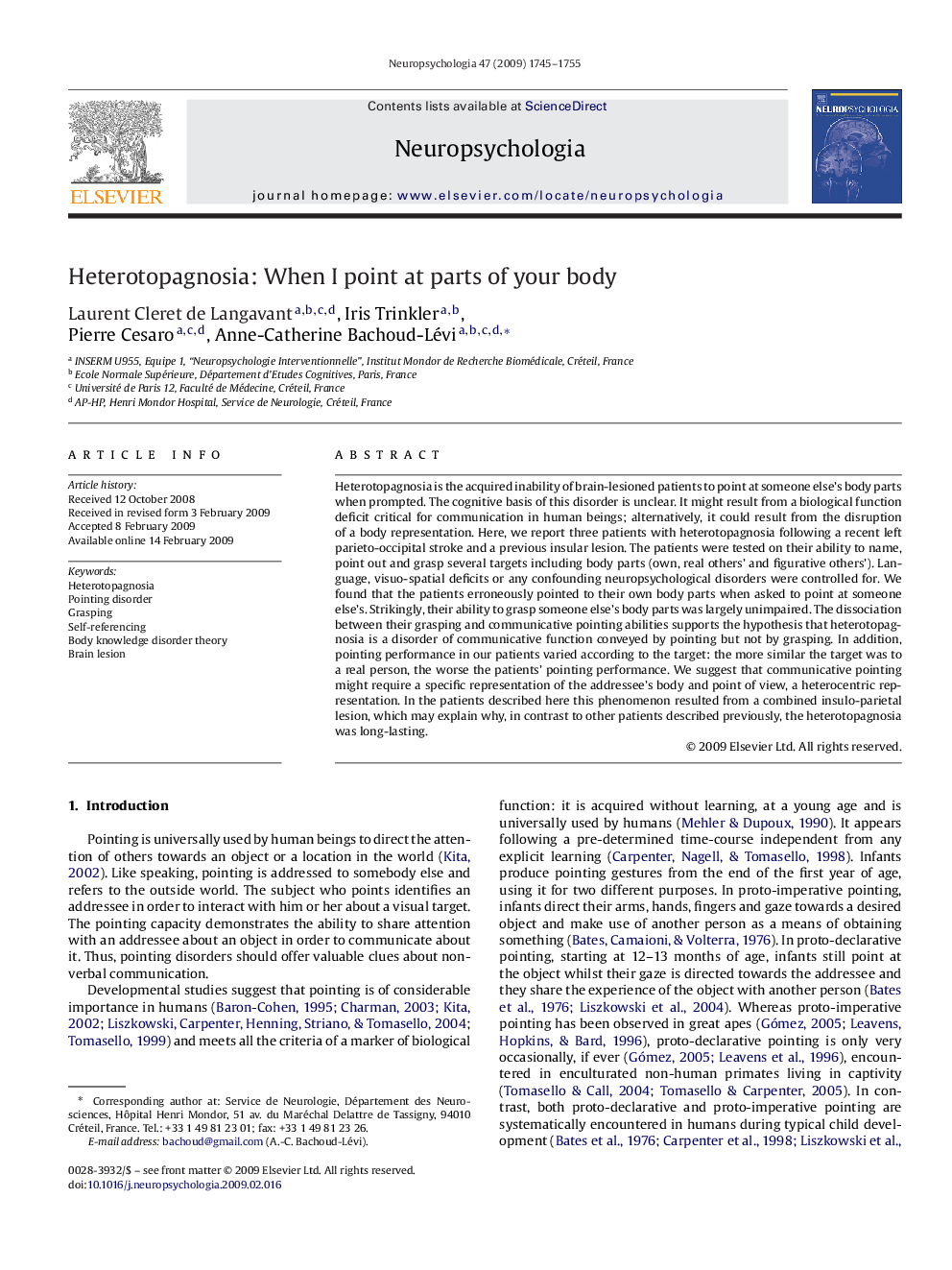| Article ID | Journal | Published Year | Pages | File Type |
|---|---|---|---|---|
| 945170 | Neuropsychologia | 2009 | 11 Pages |
Heterotopagnosia is the acquired inability of brain-lesioned patients to point at someone else's body parts when prompted. The cognitive basis of this disorder is unclear. It might result from a biological function deficit critical for communication in human beings; alternatively, it could result from the disruption of a body representation. Here, we report three patients with heterotopagnosia following a recent left parieto-occipital stroke and a previous insular lesion. The patients were tested on their ability to name, point out and grasp several targets including body parts (own, real others’ and figurative others’). Language, visuo-spatial deficits or any confounding neuropsychological disorders were controlled for. We found that the patients erroneously pointed to their own body parts when asked to point at someone else's. Strikingly, their ability to grasp someone else's body parts was largely unimpaired. The dissociation between their grasping and communicative pointing abilities supports the hypothesis that heterotopagnosia is a disorder of communicative function conveyed by pointing but not by grasping. In addition, pointing performance in our patients varied according to the target: the more similar the target was to a real person, the worse the patients’ pointing performance. We suggest that communicative pointing might require a specific representation of the addressee's body and point of view, a heterocentric representation. In the patients described here this phenomenon resulted from a combined insulo-parietal lesion, which may explain why, in contrast to other patients described previously, the heterotopagnosia was long-lasting.
